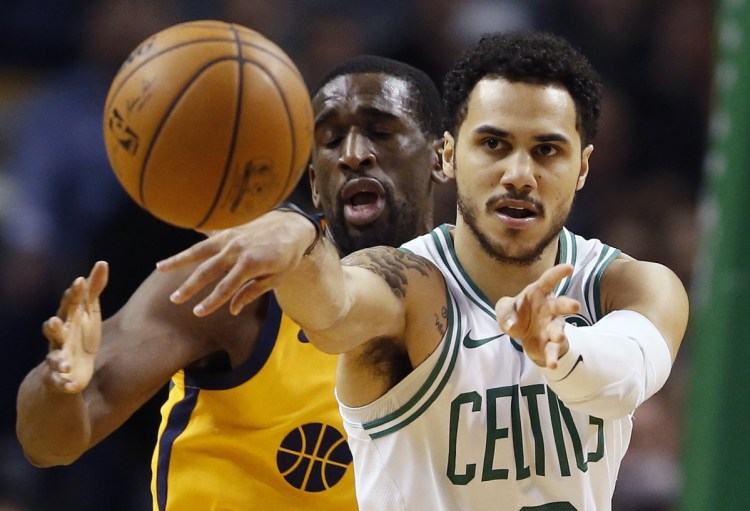It’s been a while since Shane Larkin’s last playoff series.
The Celtics’ guard made it to the postseason only once before this year, as a Mavericks rookie in 2014, when he made brief appearances in two first-round games, including seven minutes during Dallas’ Game 7 loss to San Antonio.
Three NBA teams and one Spanish club later, Larkin is playing a far more substantial postseason role this spring. Admittedly, his first steps in the Game 1 win over Milwaukee were badly flawed.
When the Celtics went off the rails over the first 7:39 of the second quarter, succumbing to a 26-4 Milwaukee run, Larkin was pouring gas on the fire with three straight turnovers, including two bad passes and an out- of-bounds violation.
“First game I had some playoff jitters. I hadn’t played in a playoff game since my rookie year,” he said after a far different result during the Celtics’ 120-106 Game 2 win Tuesday night.
“Game was moving a lot faster in my mind than it had, so I had a couple of bad turnovers because I wasn’t thinking out there,” said Larkin, who planted himself in front of a video screen the next day with Coach Brad Stevens and let the lessons from those mistakes sink in.
“I went back and watched some film with Coach. Really saw where I was making my mistakes in the offensive end, and really just came back today with that aggressive mentality,” he said. “Realizing where I made the mistakes in Game 1 and realizing what I had to do in Game 2.”
For one thing, Larkin didn’t turn the ball over in 21 minutes Tuesday night. For another, he blew the night open when, with 3.5 seconds left in the third quarter, he pushed the ball out of the backcourt to a spot 28 feet from the basket and hit a buzzer-beating 3-pointer for a 90-75 lead.
“I told (Marcus Morris) when he was taking it out – the play was to go to Greg (Monroe) in the middle and hit Terry (Rozier) on the backside, but I told him I can get a good look in 3.5 seconds. He trusted me,” Larkin said of the play. “You give me a head start with 3.5 seconds I can get to the free-throw line at least. Backed ’em up a little bit and gave me enough space to hit the shot.”
Larkin’s ability to bounce back is only one of the qualities that has endeared him to Stevens. And as the coach has stressed, Larkin’s defense has been consistently good over the first two games.
“He was very good. He’s been great defensively two straight games now, and then offensively I thought he found his rhythm,” said Stevens. “He attacked, beat people off the dribble on a number of occasions, made plays for himself and others, and played really aggressively. The shot at the end of the third was a big play from the standpoint of you go from 12 to 15 (ahead), you get to start with the ball in the fourth, like, that’s a huge, huge difference. He made a ton of big plays, and defensively he’s been great all year but the last two games he’s been very good.”
According to Larkin, his defensive side has improved with age, and the realization that valuing that side of the game will keep him in the league. He didn’t always see this wisdom.
“Earlier in my career I didn’t focus that much on that end. I kept thinking I have to score, I have to score. People are going to respect me,” he said. “But defense is where I have to make my impact. Something I’ve focused on all year. Every game I go into I think defense first. That’s where I have to make my calling card.
“I’m not going to be a guy who can play slow and back a guy down and then pick him up at the 3-point line. That can’t be me. My strong suit is pick you up at 90 feet, make you work, push the pace on offense, get into your legs and try to make your life hell. People have a size advantage on me but my advantage is being shorter and quicker.”
Copy the Story LinkSend questions/comments to the editors.



Success. Please wait for the page to reload. If the page does not reload within 5 seconds, please refresh the page.
Enter your email and password to access comments.
Hi, to comment on stories you must . This profile is in addition to your subscription and website login.
Already have a commenting profile? .
Invalid username/password.
Please check your email to confirm and complete your registration.
Only subscribers are eligible to post comments. Please subscribe or login first for digital access. Here’s why.
Use the form below to reset your password. When you've submitted your account email, we will send an email with a reset code.